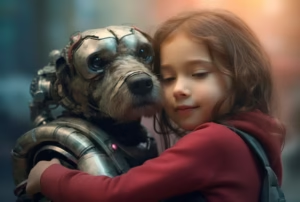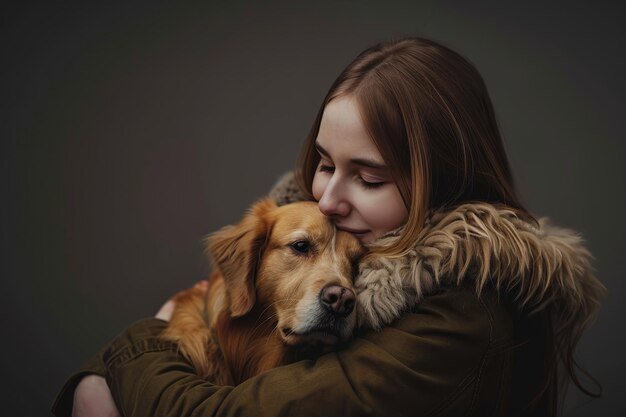It is a close relationship between Robot lupus familiar’s and human beings spans for many years.And it will be continue more so dogs are loved because of their loyalty, friendship, and support. However, not every person can look after an actively responsive pet because of different impairments either physical or economical or because of difficulties subdivided.
It is one of the most convincing looking puppets with moving fur you can imagine and suddenly the robotic wonders of the canine variety. You can also defined as not only therapeutic for people in wheelchairs but also for people with a whole raft of problems including anxiety, dementia and PTSD.
This is not only a mechanical toy but a major step forward in robotics and emotional technology that gives people real interaction and a companion.
A Companion Tailored for Care
The robot puppy is a product that exists as if it is a real pet, while practically containing no needs that require fulfilling, like feeding, walking, or visiting the vet. Created by using complex robotic technology and artificial intelligence these robotic pets mimic the behavior of real dogs. Even simply through tail-wagging, soft barking, response to touch, and voice commands they feel almost real.
Robot For Anxiety
The subject can be comforted by a kind of mechanical pet, such as a robot puppy.
The people with anxiety can recharge after getting overwhelmed by their symptoms. Touching the soft fur of the animal or getting simple affirmative answers helps to calm the person in distress.
For Dementia
Robot puppies have been very successful in care settings where people with dementia are accommodated. Thus, they can give people an opportunity to spend time and communicate and thus prevent agitation, loneliness and confusion. Research shows that being around such robotics can call up feelings of a past pet and give patients happiness and relaxation.

For PTSD
There is isolation and hyper vigilance which veteran’s key working people and other trauma survivors with post traumatic stress disorder experience. The robot puppy also fulfils an emotional release role with no criticism, as well as assists in the creation of a schedule that is healthy for the mind.
How It Works
The robotic puppy employs facet sensors, individual motors, and other artificial intelligence algorithms to mimic believable dog like movements.
Responsive Interactions:
The puppy reacts when pet, scratched or patted with its tail, barks, or tries to nuzzle.
Voice Recognition:
It can respond to basic voice commands such as sit, stay making it feel like the person is familiar to it.
Adaptive Learning:
In time the robot identifies the user’s preferences and tries to improve the bond just like a person and a pet.
Durable Design:
Easily crushable and made of hypo allergenic materials, the robot is created for recurrent usage and touching.
The Emotional Impact
Reasons that robotic pets are effective in therapy are connected to their mimicry of real Animals’ affection and presence.
Robot make Stress Reduction
The use of robot puppy cause the production of the hormone oxytocin. It is associated with love and or group affection, at the same time reduces stress.
Enhanced Social Connection
In cases where a person lives alone or is in a care home, the use of the robot is an ice-breaker, interaction with careers or relatives.
Improved Mental Focus
In a sense, the robot ensures people pay attention to constructive routines and is more likely to be occupied and give less attention to the feeling of loneliness or hopelessness.
Seven research questions stemmed from the accessibility and practicality of the framework.
This concept of robotic companions may sound costly but in this advancement manufacturers are working towards making them cheaper. A growing number of clinicians and healthcare facilities are incorporating robot puppies into treatment plans because the popular furry companions might help enhance conventional interventions in many ways.
For people who cannot have live animals from allergies, lack of stamina, time among other restrictions, a robotic puppy will provide similar consolation as a usual puppy.
Ethical Considerations
However, such companions as robotic ones have thoughts as follows:
Emotional Dependency
Still, the primary critics regard the potential of using a robotic pet to compensate for loneliness or confusion about actual interpersonal relationships as reckless.
Deception Concerns
Some people wonder whether emulating a real animal is right; especially when those with learning disabilities may not necessarily understand the difference between real and fake playmates.
But its advocates successfully stress that the main purpose of these devices is to improve quality of life, rather than substitute interactions with people or animals. It has many effective uses, and also called as socially constructive.
It inventions that can help to solve the problem of deficiencies in care and companionship. This brings us to the topic for future discussions:
The Future of Robot Companions.
Super-realistic robotic puppies demonstrate views that the concept of the emotional technology age has begun. As a matter of fact, the developers are trying to enhance their functions constantly and in some ways such as enhancing realistic facial expressions, expanding the behaviors and the additional incorporation of greater artificial intelligence so as to actualize an even more profound level of bonding.
Subsequent releases could also be people’s ability to sync the robots with applications or virtual reality tools to further customize their pets. These advancements can make robotic companion even more useful in helping out in depression, patient care, and many more.
Final Thoughts
Although it can admit that no robotic device can fully replace feelings of caring for a living pet, such creation is an incredible innovation for people who can’t take proper care of the animals. This technology shows that it is possible for an artificial means to bring consolation and restore relationships in need – in this case, the best friend does not always have to be alive.
Considering other adventures of robotics and AI, the robot puppy is a perfect symbol of creative human care and an uncomplicated function of a robotic companion with complex effects.

A lifelike robotic puppy demonstrates a positive potential for advancing innovations dedicated to enhancing the lives of people. These companions, closing the gap between the emotional and practical, add happiness, solace, and even therapy to the lives of complicated individuals suffering from anxiety, dementia, PTSD, or depression.


